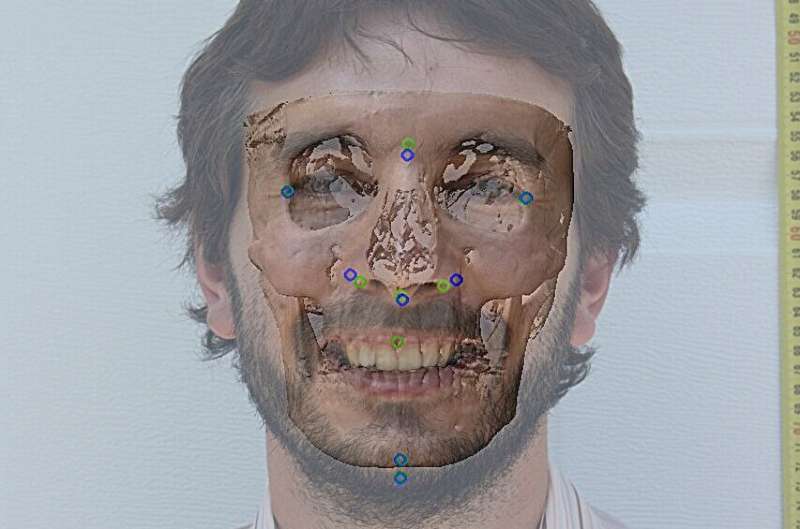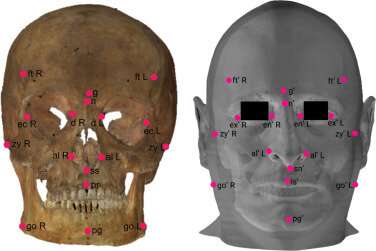This article has been reviewed according to Science X's editorial process and policies. Editors have highlighted the following attributes while ensuring the content's credibility:
fact-checked
trusted source
proofread
Researchers propose improvement in identification of human remains using craniofacial superimposition

Researchers have published a new study in Information Fusion that demonstrates an improvement in the identification of human remains using craniofacial superimposition, making decision-making by forensic experts much more objective.
The team includes University of Granada researchers from the Andalusian Inter-university Institute in Data Science and Computational Intelligence (DaSCI) and researchers from the University of A Coruña's Center for Information and Communications Technology Research (CITIC-UDC), in collaboration with the company Panacea Cooperative Research.
Craniofacial superimposition is a forensic technique used to facilitate decision-making in the identification of skeletal remains. Specifically, it involves analyzing the superimposition of an unidentified recovered skull (post-mortem) onto facial photographs (ante-mortem) of missing persons.
Despite its importance and broad applicability, this process remains complex and difficult to manage. A wide range of computerized methods have been proposed, but decision-making continues to involve subjectivity and qualitative reporting.
This new study proposes a system for evaluating evidence based on likelihood ratios (LRs), a method which has previously been used in other forensic fields such as DNA, voice and fingerprint comparison, and which is recommended by the European Network of Forensic Science Institutes (ENFSI).
The study proposes a pioneering application of this framework to craniofacial superimposition. It comprises three experiments in which the system is trained and tested under different conditions using facial images: The first uses frontal facial photographs, the second uses lateral facial photographs, and the third combines both frontal and lateral facial photographs.

In all three experiments, the proposed LR system excels in terms of calibration and discriminating power, providing specialists with a quantitative tool for the evaluation and integration of evidence.
For now, the technique remains a proof of concept that employs synthetic data and will have to be tested using vast amounts of real data. Nevertheless, the resulting likelihood ratio system provides objective support for decision-making in craniofacial superimposition.
More information: Práxedes Martínez-Moreno et al, Evidence evaluation in craniofacial superimposition using likelihood ratios, Information Fusion (2024). DOI: 10.1016/j.inffus.2024.102489
Provided by University of Granada


















